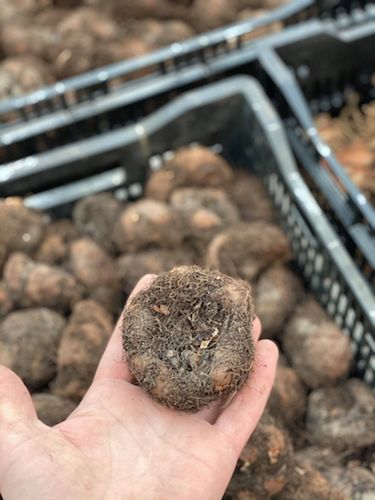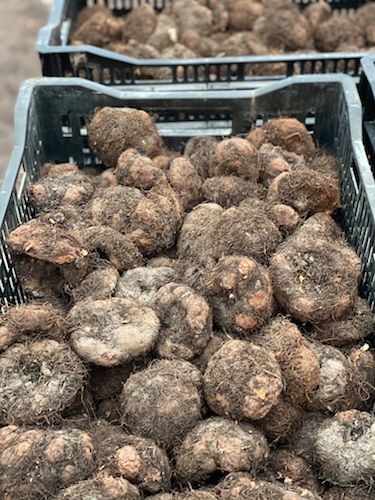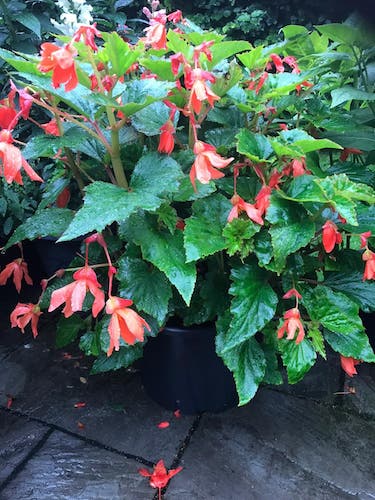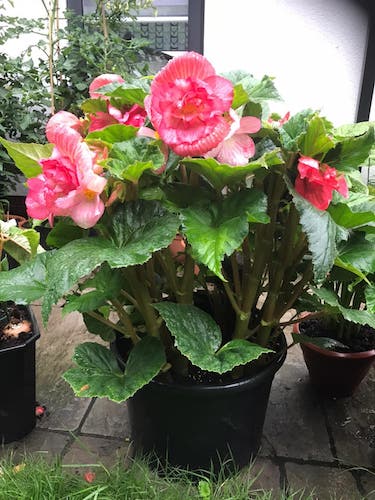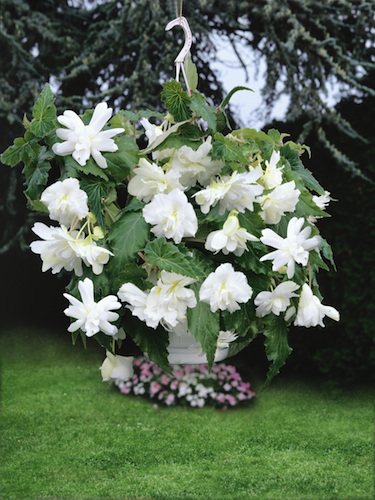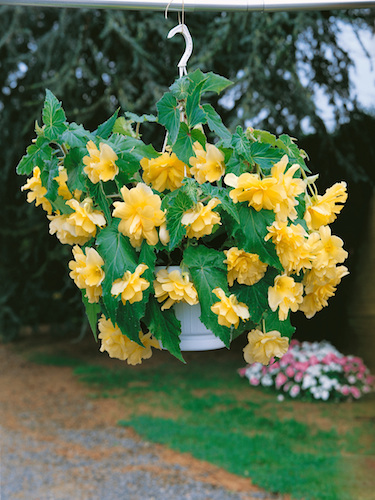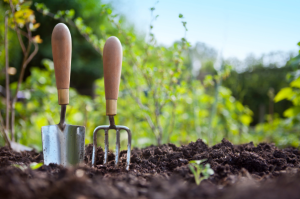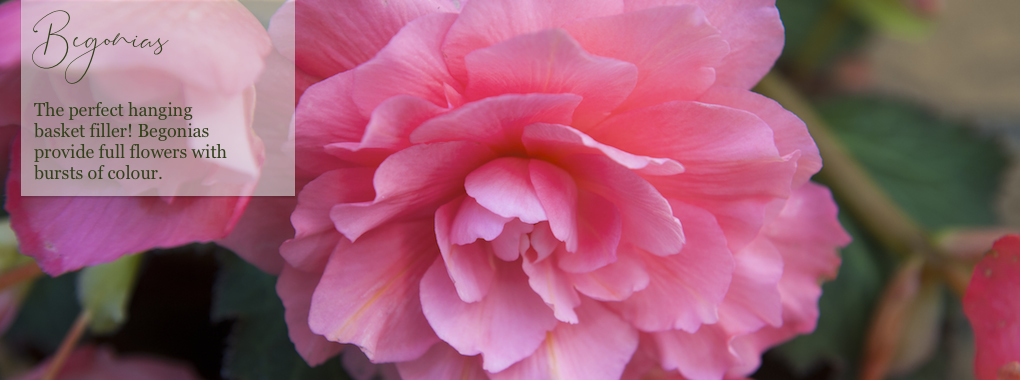
Begonias are great, showy outdoor and indoors plants for containers, hanging baskets and garden beds. They provide continuous colour throughout the summer months with their multi-layer blooms of white, pink, red, yellow and orange. These tuberous bulbs, like to be planted some where sunny in free-draining soil… they don’t like a soggy bottom!
Planting Begonias in the garden
Plant your begonia tubers out after the last frosts, usually March/April time. Unlike other garden bulbs with a pointy tip, begonia tubers (or corms) have a hollow hole in the centre of them, plant your begonias with this hole pointing upwards.
Plant Begonias shallowly, covering them with just 2-3cm (1″) of soil. Space your tubers 2cm (up to 1″ apart).
Harts’ Hint
“Give your Begonias a diluted tomato feed and/or a slow release fertiliser to really help them on their way! “
Planting Begonias in pots
Planting Begonias in pots or hanging baskets will give you the best outcome for these plants, especially if you are planting the pendula variety as these will cascade down the container. Plant Begonias in a multi-purpose compost in dappled sunshine to partial shade. Ensure you have plenty of drainage holes in your pot and add grit to encourage free draining. Plant Begonias shallowly, covering them with just 2-3cm (1″) of soil. Space your tubers 2cm (up to 1″ apart). Water regularly and feed weekly with a high potash fertiliser like tomato feed.
caring for begonias
- Feed and water Begonia plants frequently throughout the growing season. Take care not to over water.
- Deadhead faded flower heads regularly, this will encourage new growth for longer.
- Once the Begonia flowering season has finished, the stems and foliage will turn yellow and die back naturally.
- Reduce watering to prevent rotting.
- Once all the stems have fallen off naturally, dig out the tubers, clean and dry them before storing them away in peat or sand in a dry, frost-free area like a garage or shed.
- Replant the following February.




